The steep ascent yielded many rocks to flip, but only yielded a lone ringneck snake by the time we reached the top of the slope. My partner assured me than he had seen several rattlesnakes and copperheads earlier in the year and that we just needed to be persistent. As we spread out, I stepped over a fallen tree and noticed this a few feet away.
Timber Rattlesnake - Crotalus horridus
This was the first example of the "dark" phase snakes that inhabit much of the northeastern United States. This snake coiled in a patch of greenbrier (Smilax sp.) and sat contently for photos. I was pretty stoked to have had success at our first stop, so we packed up our gear and headed on to our next location. Our next stop was completely different than our first location. Unlike the steep, rocky slope of the powerline cut, this site was a large upland forest area atop a ridge. There were several openings in the forest with fallen trees and only a few scattered rocky outcrops. It wasn't long before we laid our eyes on this monster.
Timber Rattlesnake - Crotalus horridus
This was by far the largest rattlesnake I've ever encountered in the field, well over the four foot range and brilliantly marked. Timber rattlesnakes do not get much larger than this, especially in the northern portion of their range. To reach this size, you need a lot of years and an abundant prey source. What was equally impressive about this snake was its string of rattles, totaling thirteen segments. We spent a good amount of time photographing and enjoying this specimen, a truly formidable snake to meet in the field.
We eventually parted ways and continued to explore the area. Just a few short minutes later, another timber made an appearance in awesome fashion.
This timber rattlesnake was in textbook ambush position. Using their sense of smell, timber rattlesnakes will follow the scent trails of small rodents to locations such as fallen trees or logs. Small rodents such as chipmunks and squirrels use regular travel routes. Rattlesnakes are able to detect these trails and position themselves to intercept rodents on these travel routes. Usually, the snake will coil along a fallen tree or log with its head resting on the edge. This allows the snake to sense the vibration of an incoming rodent and thus prepare itself for a lethal strike. For more information on timber rattlesnakes foraging behavior, read this study done by H.K. Reinert at. JSTOR. I've always wanted to see a timber in ambush position, and this was certainly a memorable field moment. We did not disturb the snake and continued on in exploring the area andf before long we turned up this duo.
Copperheads are some of the best examples of how effective comouflage can be. These two were found near a large rock outcrop where the sun was hitting. Unlike the timber rattlesnake, copperheads come into contact with people much more often due to their numbers. In some areas, copperheads may be the most common snake species and can be easily missed by an unaware hiker.
Northern Copperhead - Agkistrodon contortrix mokasen
Copperheads are always a treat for me, especially because I don't wander into their range terribly often. We managed to pick up one more timber rattlesnake, an in-shed individual found under a large rock bring our totals on the day to five timbers and two copperheads. It was a quick day, but it was enough to leave a lasting impression on me. West Virginia is a beautiful state that harbors many cool herp species, especially the salamanders. I'm sure I will be back next year to see more of the state that truly is wild and wonderful.

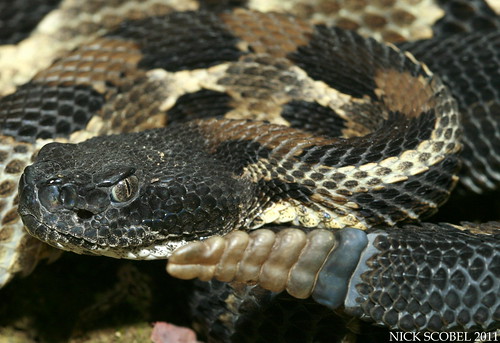

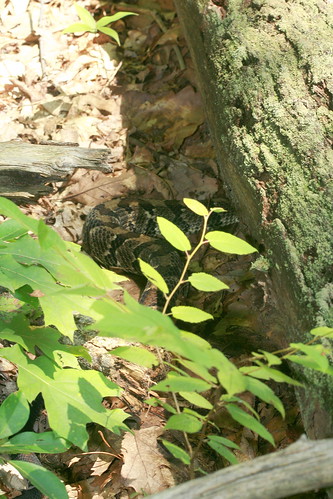
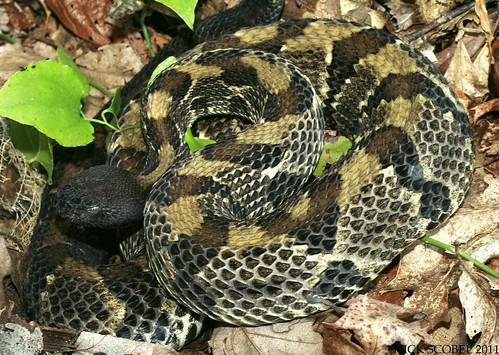
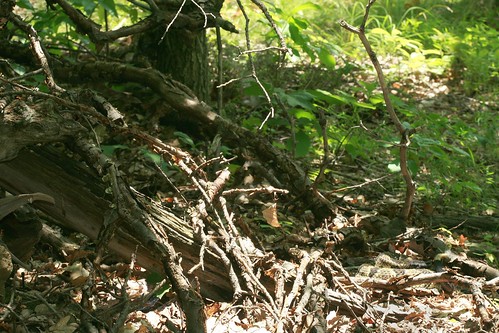


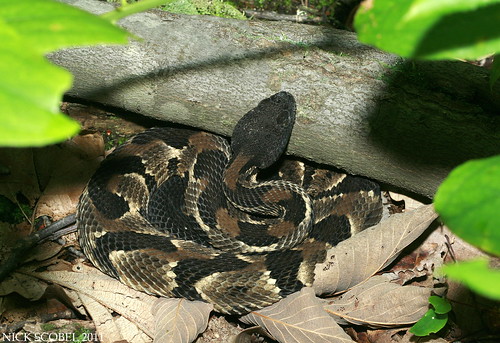

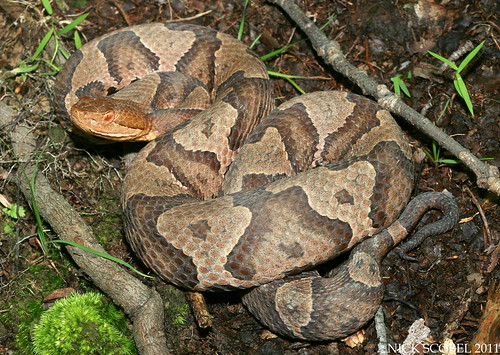
Great pictures and narrative, Nick. Nice work.
ReplyDeleteWow! Great find with the dark phase timber. I would love to see one. :)
ReplyDelete